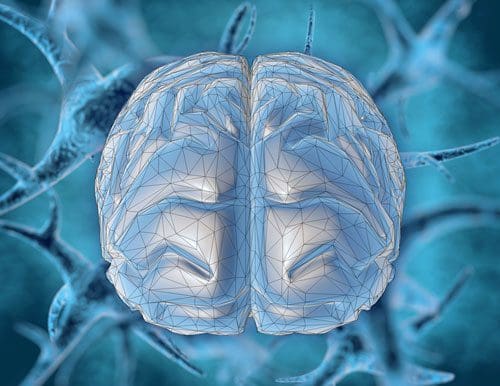As you progress in your recovery, you may find yourself in a stressful situation feeling anxious and worried.
What is the Parasympathetic Nervous System?
The parasympathetic nervous system (PNS) is one of the two main branches of the autonomic nervous system, the other being the sympathetic nervous system. Together, these systems regulate involuntary bodily functions, including those related to the heart, lungs, digestive system, and more. The PNS is often referred to as the “rest and digest” or “feed and breed” system because it generally promotes relaxation, energy conservation, and activities that help the body recover and restore.
Sometimes the stress is caused by something psychological, such as constantly worrying about losing a job or a family problem. Other times the cause of the anxious feelings can be environmental, such as an upcoming major deadline or trying to get to work during a busy rush hour.
Regardless of the cause of the stress, high levels of anxiety cause the human body to react by releasing stress hormones that result in physiological changes that include a pounding heart, quickening of breathing, tensing of muscles and sweating. All of the body’s combined reactions to stress are known as the fight or flight response.
Knowing how to use the parasympathetic nervous system to manage your stress and anxiety can promote lasting sobriety by reducing the urge to turn to addictive substances.
The Fight or Flight Response and the Parasympathetic Nervous System
The fight or flight response was intended as a survival mechanism to allow mammals, including humans, to react quickly to a situation that was life-threatening. Unfortunately, today the human body has the same response to non life-threatening stressors that cause high levels of anxiety.
Research has shown that the long-term effects of chronic stress affect a person’s psychological and physical health. According to an article in Harvard Health Publishing, “The repeated activation of the stress response takes a toll on the body. Research suggests that chronic stress contributes to high blood pressure, promotes the formation of artery-clogging deposits, and causes brain changes that may contribute to anxiety, depression, and addiction.”
The body’s fight or flight response is controlled by the sympathetic nervous system, which is one part of the autonomic nervous system. The other part is the parasympathetic nervous system, which works to relax and slow down the body’s response.
Sweetwater Health describes the autonomic nervous system in this way, “The sympathetic and parasympathetic nervous systems act like the accelerator and brakes on a car. The sympathetic system is the accelerator, always ready to rev up and take us out of danger. The parasympathetic system is the brakes, slowing us down when danger isn’t present.”
How Does the Parasympathetic Nervous System Decrease Anxiety?
The changes in the body when the sympathetic nervous system is activated take place very quickly. Until the brain perceives that the danger has passed, it continues to release corticotropin and adrenocorticotropic hormones that keep the body on high alert and ready for intense physical activity.
Once the threat is over, cortisol levels decline and the parasympathetic nervous system slows the stress response by releasing hormones that relax the mind and body while inhibiting, or slowing, many of the high energy functions of the body.
The parasympathetic nervous system (PNS) plays a crucial role in regulating the body’s response to stress and anxiety by promoting relaxation and reducing the “fight or flight” response associated with the sympathetic nervous system (SNS). Here’s how the PNS helps decrease anxiety:
- Counterbalancing the Sympathetic Nervous System: The autonomic nervous system, which includes both the sympathetic and parasympathetic branches, helps maintain balance in the body’s responses. The SNS is responsible for the “fight or flight” response, which prepares the body for action in stressful situations. The PNS counteracts this response by promoting the “rest and digest” state.
- Slowing Heart Rate: One of the key ways the PNS decreases anxiety is by slowing down the heart rate. It does this by stimulating the vagus nerve, which sends signals to the heart to reduce its rate of beating. A slower heart rate is associated with relaxation and reduced anxiety.
- Lowering Blood Pressure: The PNS helps reduce blood pressure by causing blood vessels to dilate (widen). This decreases the overall cardiovascular response to stress, contributing to a sense of calm.
- Promoting Digestion: When the PNS is activated, it stimulates digestive processes such as increased salivation, improved gastrointestinal motility, and increased blood flow to the digestive organs. These actions help the body process food efficiently, which can be hindered during times of stress.
- Enhancing Immune Function: Chronic stress and anxiety can weaken the immune system. The PNS, by promoting relaxation and reducing stress, can indirectly support a stronger immune response.
- Relaxation and Calmness: Activation of the PNS leads to an overall sense of relaxation and calmness. This includes reducing muscle tension, slowing down the respiratory rate, and promoting a feeling of general well-being.
- Improved Cognitive Function: Anxiety can impair cognitive functions like decision-making and problem-solving. By reducing anxiety, the PNS can improve cognitive clarity and functioning.
- Emotional Regulation: The PNS also plays a role in emotional regulation. It can help dampen the intensity of emotional responses, making it easier to manage and cope with anxiety-provoking situations.
Activating the Parasympathetic Nervous System to Decrease Anxiety
When the parasympathetic nervous system is activated, it produces a calm and relaxed feeling in the mind and body. People can learn to trigger their parasympathetic nervous system to immediately reduce their sense of anxiety and stress. This also lifts their mood, strengthens their immune system, and reduces their blood pressure.
There are many techniques that a person can use to strengthen and activate their parasympathetic nervous system, causing a relaxation response in their body. For example:
- Spend time in nature
- Get a massage
- Practice meditation
- Deep abdominal breathing from the diaphragm
- Repetitive prayer
- Focus on a word that is soothing such as calm or peace
- Play with animals or children
- Practice yoga, chi kung, or tai chi
- Exercise
- Try progressive relaxation
- Do something you enjoy, such as a favorite hobby
A Few More Ways to Activate the Parasympathetic Nervous System
Gently Touch Your Lips
Your lips have parasympathetic fibers spread throughout them, so touching them activates the parasympathetic nervous system. Take one or two fingers and lightly run them over your lips.
Be Mindful – Don’t Multitask
Try not to multitask and be mindful of what you are doing. Toni Bernhard in her book, How To Be Sick – A Buddhist Inspired Guide for the Chronically Ill and Their Caregivers, quotes Korean Zen master Seung Sahn who liked to tell his students, “When reading, only read. When eating, only eat. When thinking, only think.”
Use Visualization
Use visualization and imagery to stimulate the parasympathetic nervous system. Picture yourself in a peaceful place that you love. It could be the ocean at sunset, a mountain stream, a beautiful lush forest, a secluded beach, a field of wildflowers, or any place you enjoy and feel relaxed. Use all your senses as you visualize the place in this imagery. Hear the sounds of the waves, feel the breeze on your face, and smell the scent of the flowers. You’ll feel relaxed in no time at all.
Aromatherapy:
Certain scents, such as lavender, chamomile, and rose, have been shown to have calming effects and can help activate the PNS. You can use essential oils or scented candles.
Acupuncture and Acupressure
These traditional Chinese medicine practices are believed to help balance the autonomic nervous system, including the PNS.
Biofeedback and Relaxation Apps
Biofeedback devices and relaxation apps can teach you to control physiological responses like heart rate and muscle tension, which can help activate the PNS.





